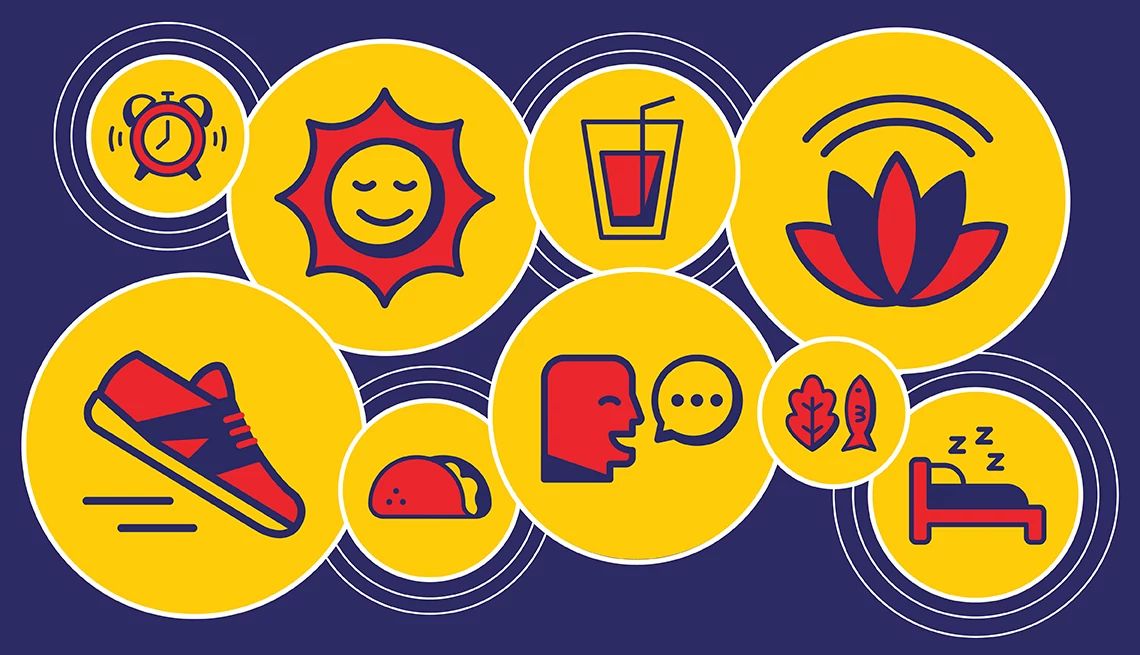AARP Hearing Center


Every individual — indeed, every individual body part — ages at a distinct rate. But there are things you can do that may slow aging or, at the very least, foster healthy aging. Here's what a day without aging might look like.
6–8 a.m. Wake up. Waking up between 6 and 8 a.m. is generally in sync with your body’s circadian rhythm, which is the internal clock that regulates your sleep and wakefulness. The American Academy of Sleep Medicine recommends that you wake up no less than seven (and no more than nine) hours after you went to bed.
7–9 a.m. Morning walk. Be sure to get some sunlight in the morning, which helps your body produce the vitamin D that may slow the aging process. Make a habit of walking the dog or doing light chores outside first thing in the morning, before the demands of the day trap you in your house, car or office.
9–10 a.m. Breakfast. Start with a protein smoothie with mixed fruit. A high-protein breakfast is critical for maintaining muscle mass as we age, according to numerous studies. Research shows that getting 25 to 30 grams of protein in the morning is effective in preventing age-related muscle loss, also known as sarcopenia.
Noon. Meditation. Any calming activity, such as yoga or prayer, can help reduce the risk of cognitive decline by activating the prefrontal cortex, an area of the brain that is diminished in those with cognition difficulties. A study in the Journal of Alzheimer’s Disease found that just 12 minutes of meditation daily could make a difference.
1 p.m. Lunch. Have a mixed salad with salmon. A Mediterranean-style diet that is abundant in fruits and vegetables and omega-3-rich fish such as salmon can reduce inflammation, a culprit in biological aging, according to a review of studies in the journal Nutrients. Eating a wide array of plant foods boosts the microbiome, the master controller of gut inflammation.































































You Might Also Like
Feel Revitalized With This 10-minute Chair Yoga Class
Learn various poses that help with flexibility and mobility
A Simple Test Can Tell You How Well You're Aging
Balance is key to maintaining independence and wellbeingTake Your Tastebuds on a Tantalizing Mediterranean Tour
Whip Up sheet pan gnocchi, green pea hummus, and roasted chicken and potatoes
Recommended for You